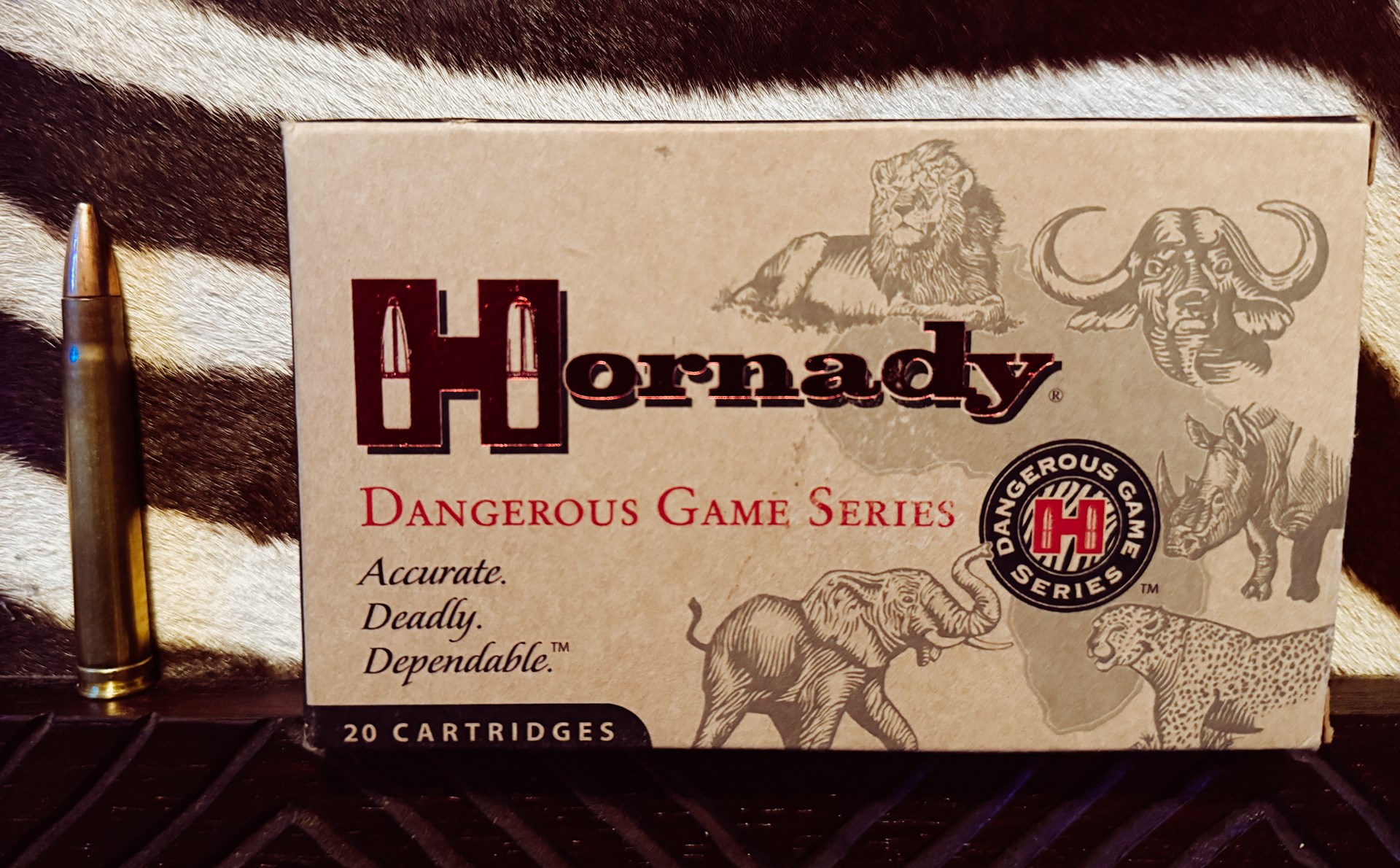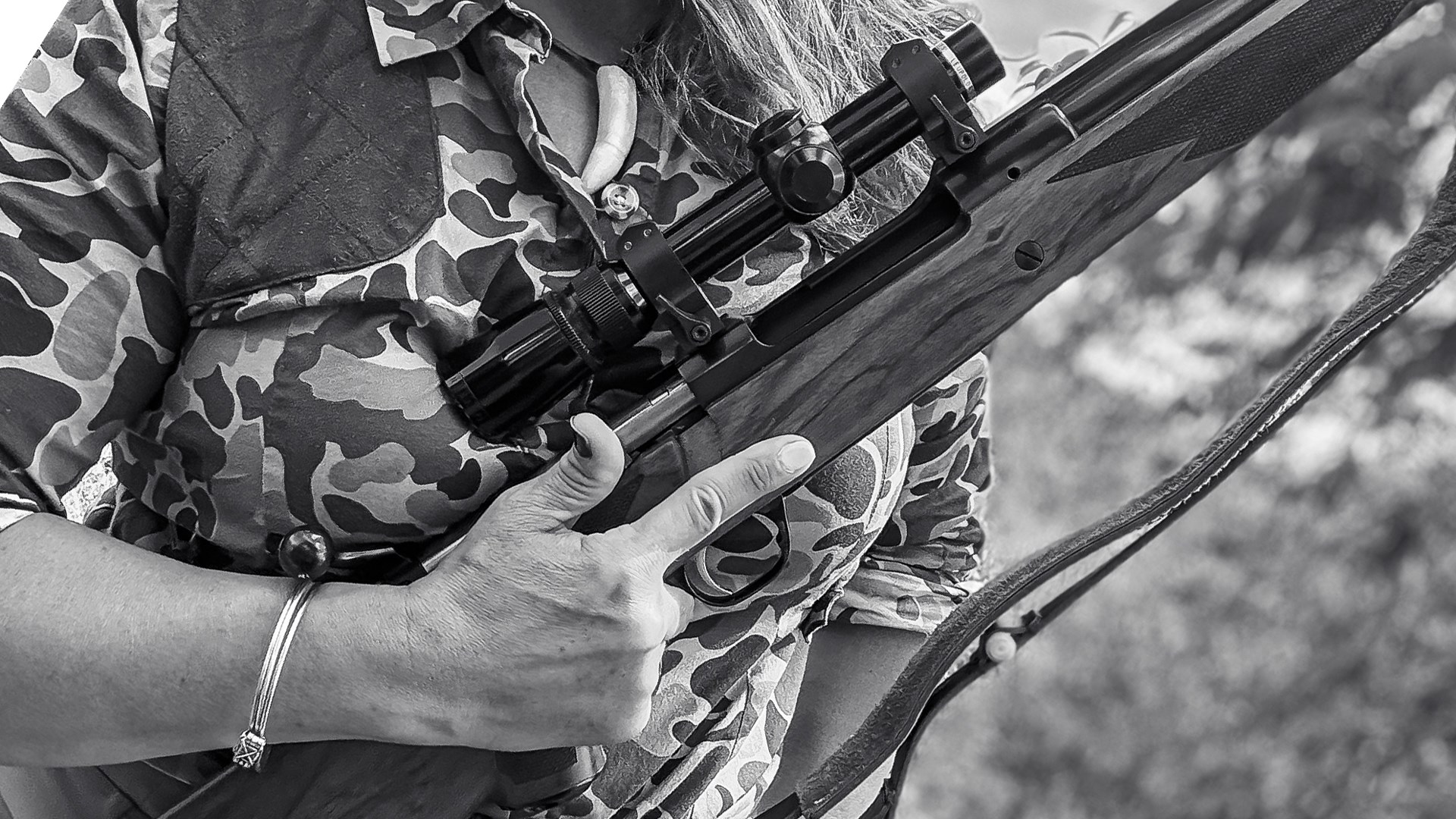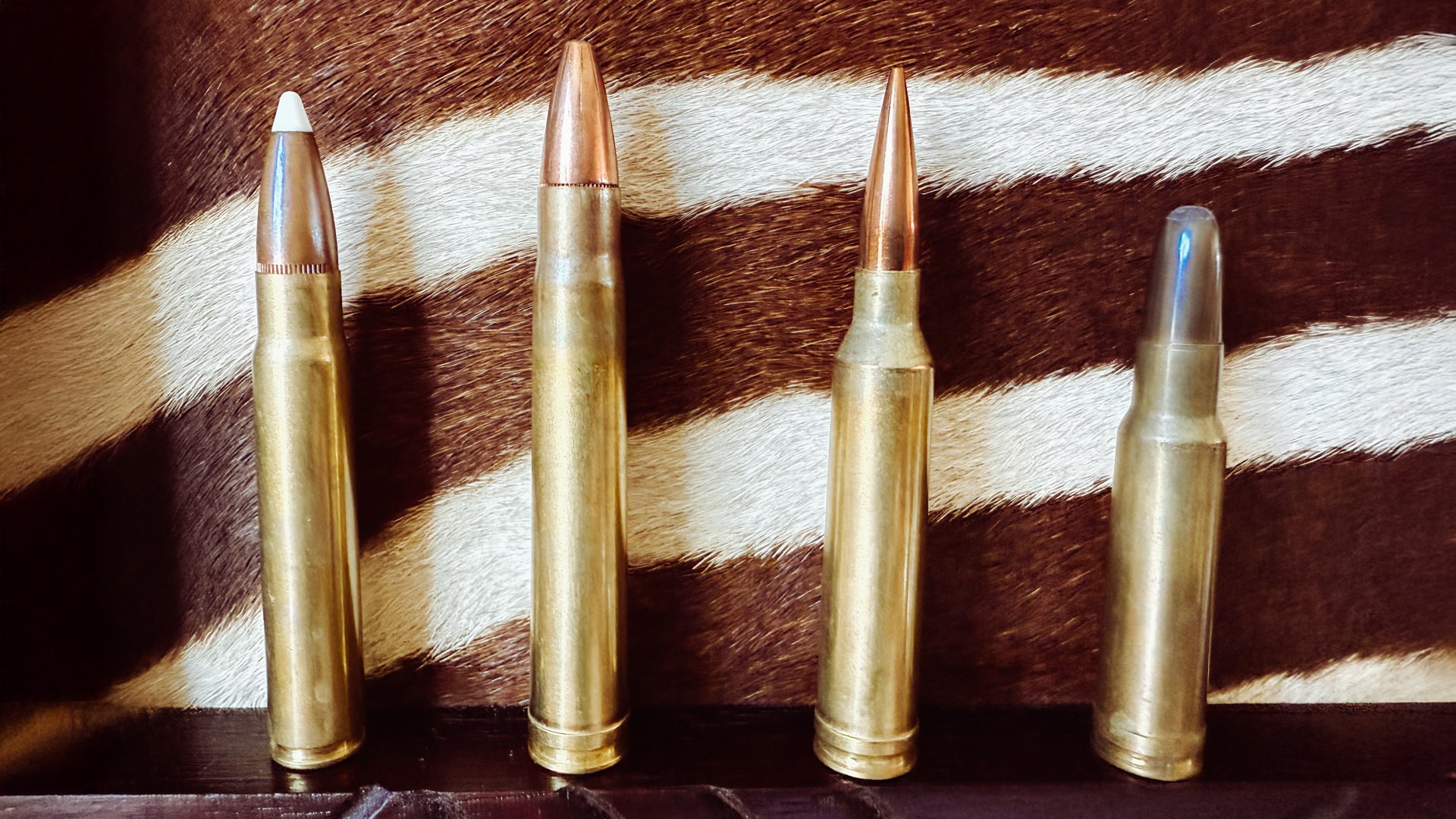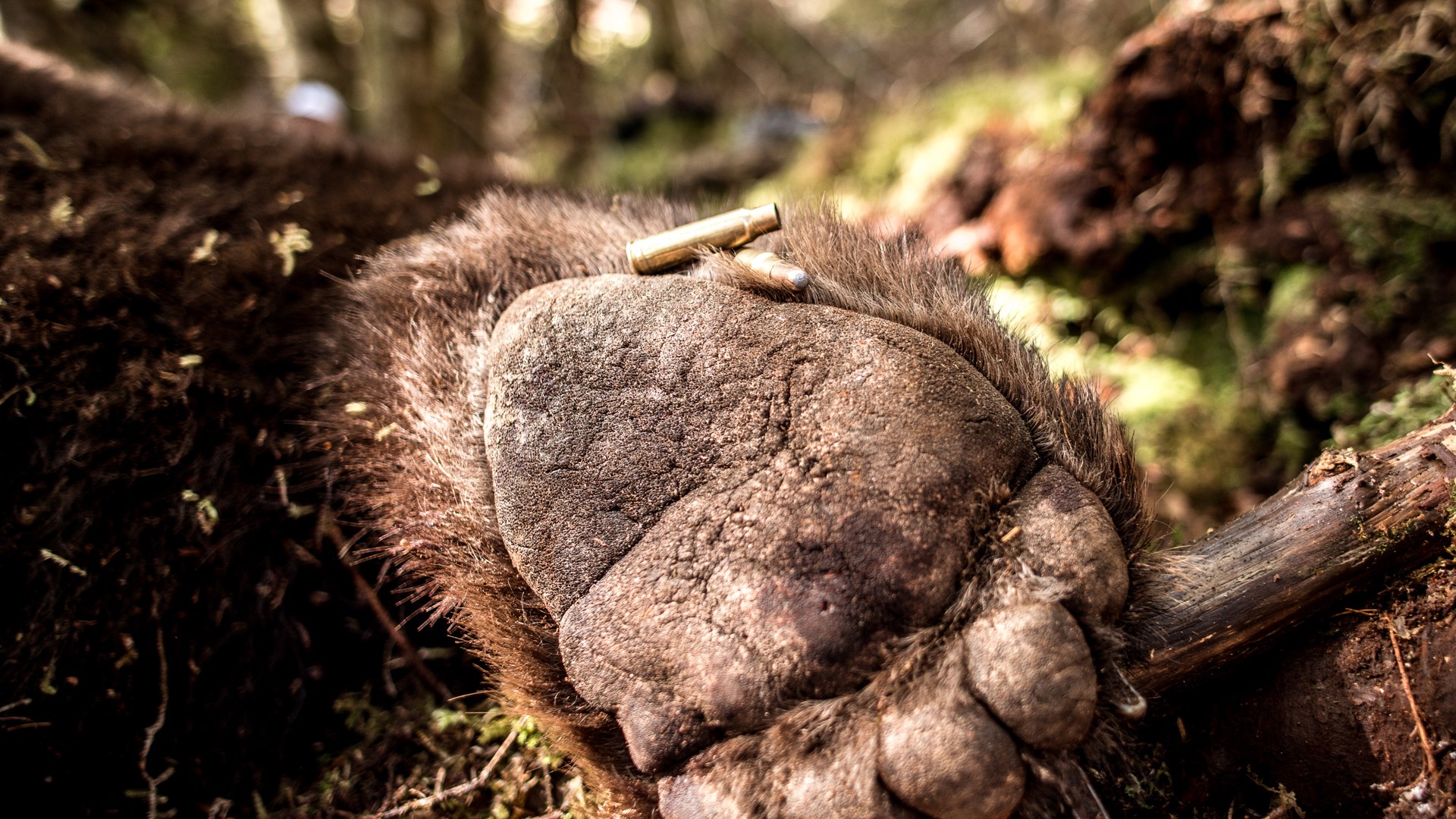The .375 Holland & Holland Magnum brings to mind sun-baked African savannas, trophies in salt, whispered commands of “take him” from a weathered professional hunter, Hemingway tales around a fire and perhaps a good bourbon after a proper day afield. The legacy created by the .375 H&H Mag. demonstrates a pedigree and complexity that would impress even the most devout social climber. Stroll with me through the family dynasty that began with the .375 H&H Mag. and is still gaining momentum well over a century later.
Once Upon A Time…
They say every good story starts with “Once Upon a Time … .” This particular tale actually began with the German-made 9.3×62 mm cartridge. Conceived in 1905, this Mauser cartridge offered exceptional sectional density, unparalleled versatility and indisputable effectiveness on African game for a medium-bore cartridge.
The 9.3×62 mm was relatively economical to manufacture and opened up African hunting to Americans and Europeans alike across the economic spectrum. Thanks to the Mauser 98 action, big game African adventures were no longer just an activity for the wealthy elite. Large-bore double rifles were exchanged by many for the usability, functionality and economy of the 9.3×62 mm.
As the German-created 9.3×62 mm opened African horizons and dominated the medium-bore genre, the British gunmakers were hard at work. Many notable cartridges were brought to market during this time from makers such as Rigby, Jeffrey, Westley Richards and of course, Holland & Holland.
In 1912, London gunmaker Holland & Holland introduced to the world the .375 H&H Mag. Created to be the competitive cousin to the 9.3×62 mm, the .375 H&H Mag. brought some very distinctive genetics to the table.
First is sectional density. The 9.3×62 mm had demonstrated exceptional success on thick-skinned dangerous game animals with its classic 286-grain projectile when it came to penetration. Holland & Holland knew that this was an imperative benchmark to meet in order to compete in lethality.
Second is velocity. The round must have sufficient velocity to be terminally effective at longer ranges. Increased case capacity was one way to achieve this.
The last component was reliability. Dangerous game hunting and gun malfunctions are not a good marriage. Developing a round that can feed and cycle reliably through a magazine-fed rifle platform in African weather conditions was critical. This required a delicate balance of case capacity, shoulder degree angle and pressure.

While the .375 H&H Mag. now utilizes a variety of modern powders, it was originally developed to be loaded with cordite. This allowed for low enough pressure ranges to function reliably in the extreme temperatures of Africa.
Let’s take a look at the construction and ballistics behind the .375 H&H Mag. as we know it today.
.375 H&H Mag. Ballistics
The .375 H&H Mag. was designed for bullet weights from 200 to 380 grains in various constructs. Velocities range from 2,300 f.p.s. to upwards of 3,200 f.p.s. with the lighter bullet offerings. Resulting muzzle energy of the .375 H&H Mag. cartridge can surpass 4,500 ft.-lbs.
The .375 is remarkably flat-shooting with the appropriate bullets for a medium-bore dangerous game round. For example, a current Hornady round is the 300-grain DGS, and with an established 100-yard zero, this bullet has just 5.6″ of drop at 200 yards.
Upon its inception, the .375 H&H Mag. was marketed with three distinct bullet weights:
- 235-grain with a muzzle velocity of 2,800 f.p.s.
- 270-grain with a muzzle velocity of 2,650 f.p.s.
- 300-grain with a muzzle velocity of 2,500 f.p.s.
Today, with the help of extensive bullet options and modern powders, the versatility of the .375 H&H Mag. is a solid choice from plains game to dangerous game.
Cartridge Construction & Common Platforms
One feature of the .375 H&H Mag. that sets it apart is the necessity of a belt to headspace correctly. This is due to the unique geometry and proportions of the case—sleek, elongated and shallow of shoulder. With the intended application (Africa hunting), proper pressure and cycling across extreme environmental conditions was imperative.
The .375 H&H Mag. was originally configured in a magnum Mauser-style action. However, the .375 H&H Mag. is functional in a variety of platforms—single shot, bolt-action or double rifle—at one point there was even a handgun configuration compatible with the round. Simultaneously, the .375 Flanged, with its rimmed case, was brought to market for use in double rifles. If being used for dangerous game, double rifles or controlled-round-feed platforms were preferred.

While ballistically advantageous, the .375 H&H Mag. took some time to gain traction over the 9.3×62 mm due to manufacturing costs. The magnum action was more expensive to make and thus offered at a higher cost to the consumer. The reasonable and effective 9.3×62 mm in the Mauser 98 action continued to maintain a strong foothold as the African favorite for several years.
Tipping Point
The belted-case concept synonymous with the .375 Holland & Holland was patented in the United Kingdom of Great Britain in 1891. In 1907, it was used for the .375 Holland-Schoenauer in a Mannlicher-Schoenauer bolt-rifle platform brought to market by Holland & Holland. In 1912, the .375 H&H Mag. was born utilizing an improved belted case and a legacy began.
The .375 H&H Mag. both directly birthed and heavily influenced much of modern magnum ballistic theory as we know today. As in every family, there are the favorites, the delinquents and the wildcats. The power of the .375 H&H Mag. parentage not only produced a vast number of noteworthy cartridges, but also helped influence a generation of powerful ballistic excellence. Let’s first look at the blood relatives as they were of this iconic round.
Direct descendants of the full-length .375 H&H Mag. case:
- .244 Holland & Holland Magnum
- .300 Holland & Holland Magnum (also known by some as the .30 Super).
- .350 Griffin & Howe Magnum
- .400 Holland & Holland Magnum
- .470 Capstick
Standard-length descendants based on the .375 H&H Mag. case:
- .264 Winchester Magnum
- .275 Holland & Holland Magnum
- .300 Winchester Magnum
- .338 Winchester Magnum
- .458 Winchester Magnum

Direct parentage aside, the .375 H&H Mag. has significantly influenced cartridge development without direct ballistic birthing. Nothing spices up a Thanksgiving dinner like feisty (or unexpected) family members. Ballistically speaking, what are these cartridges and why are they worth a mention?
- .257 Weatherby Magnum
- 26 BSA Magnum
- 6.5 mm Remington Magnum
- 6.5-300 Weatherby Magnum
- .270 Weatherby Magnum
- 7×61 mm S&H
- 7 mm Remington Magnum
- 7 mm Weatherby Magnum
- 7 MM STW
- Super .30
- .300 Weatherby Magnum
- 308 Norma Magnum
- 8 mm Remington Magnum
- 33 BSA Magnum
- .340 Weatherby Magnum
- .350 Remington Magnum
- .358 STA
- .358 Norma Magnum
- .375 Weatherby Magnum
- .40 BSA Magnum
- .416 Remington Magnum
- .458 Lott
- .458 Winchester Magnum
Perfect Pedigree
The .375 Holland & Holland Magnum both sired and inspired a vast array of noteworthy and influential cartridges. Pedigree and prestige aside, it’s frequently the drunken uncles and rebellious children that really make things interesting. With that in mind, we are going to take a look at the more unique derivatives of the .375 H&H Mag..
In every family, there are the golden children, the high achievers, the favorites. When evaluating the .375 H&H Mag. legacy, the .300 H&H Mag. stands out. Introduced in 1925, it was a European darling right away with slowly growing popularity with U.S. gunmakers and ammunition manufactures. Boasting similar proportions to the .375 H&H Mag., it also required the belt to achieve proper head spacing. With sleek proportions and shallow shoulders, it was the svelte offspring.

The .300 H&H Mag. is well-suited to longer range pursuits in both North America and the plains of Africa. While not necessarily a prodigy in its own right, the .300 H&H Mag. was the beginning of the .30-cal. belted magnum lineage. Several ammunition companies actively produce the .300 H&H Magnum, making it an accessible option for species appropriate hunting worldwide. It is affectionately called the Super .30 in some quarters.
Continuing, the .257 Weatherby Magnum is a direct offspring of the Super .30, or .300 H&H Magnum. Weatherby, the close family acquaintance of the .375 H&H Mag., created this cartridge to maximize the potential of a .25-cal. rifle. With barrel-blistering velocities and well-supplied commercial ammunition, the .257 Wby. Mag. is a shining example of the strong parentage of the .375 H&H Mag.
Next in the line-up of honorable mentions is the 7 mm Remington Magnum. Immensely popular in the U.S. as a hunting cartridge, the 7 mm Rem. Mag. is the red-headed stepchild of the .375 H&H Mag. Based on the .264 Winchester Magnum case, the 7 mm Rem. Mag. is widely accepted as an outstanding all around North American game cartridge. It is also an effective choice for Africa’s plains game.
Our final honor roll mention is a personal favorite—the .350 Remington Magnum. Generationally speaking, it is a bit removed from the .375 H&H Mag., but a direct relation of the 7 mm Rem. Mag. Lovingly called by some the “Original Short Mag,” this cartridge shares strong genetic ties to the patriarch under discussion—the .375 H&H Mag.

The .350 Remington Magnum is a short in stature case with delightful girth, a stout belt and case capacity exceeding a .30-’06 Sprg. While no longer commercially produced, it is a favorite for ballistic hobbyists and reloaders seeking a highly capable short action-friendly round with family ties to the prestigious .375 H&H Mag.
The .375 H&H Mag. is an undisputed icon. Carried in the hands of legends for over a century, this cartridge has faced and conquered both conditions and quarry worldwide. While the trophies taken are both numerous and prestigious, the .375 H&H Mag. has created something else—a lasting and living legacy.
The .375 H&H Mag. has achieved what many of us seek our entire lives—a legacy of excellence and honor that lives on far beyond ourselves—and has given life to countless cartridges that both honor their lineage and shine in their own right. That is truly a legacy to be proud of.
Read the full article here

